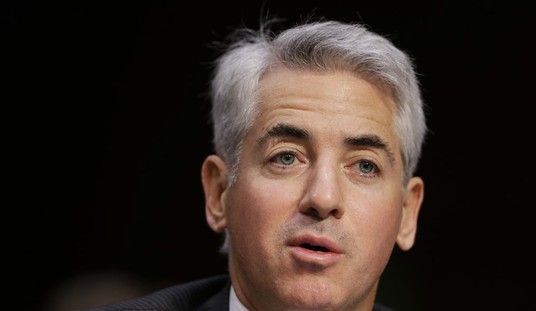The widespread public upset about George Zimmerman’s killing of Trayvon Martin in Sanford, Florida, falls into two different categories: concerns about Florida’s gun laws, and concerns about racism by Sanford police. The decision of the Sanford police to not arrest George Zimmerman does not seem like evidence of racism at all, but of a realistic evaluation of the evidence available to them.
Zimmerman’s claim was that Martin attacked him, knocking Zimmerman to the ground. At least one witness reported that he saw two men fighting on the ground, one on top “beating up the other guy.” Zimmerman had a bloody nose and blood on the back of his head. It appears that Zimmerman did not exercise good judgment in chasing Trayvon Martin down, leaving the safety of his car to catch a teenager who had at this point done nothing wrong. Nonetheless, Zimmerman’s version of what happened, corroborated by what the witness saw and evidence of injury to the back of Zimmerman’s head, suggests that Martin was on top of Zimmerman, pounding him pretty hard. Under those circumstances, Zimmerman had a plausible basis for shooting Martin.
Perhaps Zimmerman’s version shades the truth. Perhaps Zimmerman attacked Martin, not the other way around. Martin might have told a different version of events, but he is dead. The evidence that was available in the aftermath of the shooting created reasonable doubt that Zimmerman committed a criminal act. (Stupid, perhaps, but not everything stupid is criminal.) Nothing that has shown up since, not even Martin’s girlfriend’s recounting of a cell phone conversation that she had at the start of his confrontation with Zimmerman, contradicts Zimmerman’s claim.
Trayvon Martin’s death was a tragedy, but not every tragedy is a crime. Unless someone finds a witness or physical evidence to prove that Zimmerman lied about what happened, or to show that Zimmerman started a fight with Martin, there really is no basis to pursue criminal charges against Zimmerman. (There may well be a civil case against Zimmerman, where the burden of proof is much lower than in criminal court.)
Some states make a point of gathering data on permit holders who are convicted of crimes. The results are generally positive: for 2009, Texas reported that 101 concealed handgun licensees were convicted of crimes, out of 65,561 convictions statewide. Since there were 402,914 licensees in 2009, in a state with just under 25 million people, this is actually pretty impressive: 1.6% of the population had 0.15% of the criminal convictions. In short, Texas licensees had less than one-tenth of the criminal conviction rate of the general population.
From 2003 through 2010, I gathered news accounts of American civilians using guns in self-defense: a total of 4,699 such incidents. (You can read a detailed report at the Cato Institute.) What I found quite startling as I compiled those reports over the years is how few incidents I found where concealed weapon permit holders used those guns in a way that was lawful but foolish. The case that was most obviously analogous to the Zimmerman-Martin tragedy took place in Aurora, Colorado, on November 13, 2004. There was a white man with a concealed handgun (Glenn Eichstedt), and a black man with a bad attitude (Aaron P. Davis). It started as a dispute over a door ding in a parking lot. At the end, Eichstedt was alive, and Davis was on the way to the hospital, where he died.
The same screeching about racism appeared because the shooter was white and the dead man was black. The difference is that there were lots of witnesses to what happened. Some say that Davis pushed Eichstedt, others say that Eichstedt punched Davis. Still others reported that the first physical contact was when Davis attacked Eichstedt with a solid metal bar eight inches long and 1 ½ inches in diameter, hitting him in the head. This is the point where Eichstedt, in fear for his life, shot Davis. Not surprisingly, the grand jury refused to indict Eichstedt.
Like what appears to have happened with Zimmerman and Martin, cooler heads needed to prevail. Both Eichstedt and Davis had been drinking (although they were not legally drunk), and it may have contributed to this tragedy. Both men should have backed away from the confrontation, exchanged insurance information, and let it go. Eichstedt, being armed, especially should have backed away. A paint chip isn’t worth someone’s life — ever. But once Davis attacked Eichstedt with that metal bar, Eichstedt was completely lawful in using deadly force.
As I said earlier, we do not know, and likely never will, exactly what happened in the dark between Zimmerman and Martin. The burden of proof works to Zimmerman’s advantage, as it inevitably must in a criminal case. This is not a problem of racism; this is a natural consequence of the high standard of proof required in a criminal case.
I do have one final disturbing thought on this matter. A lot of energy is being focused on the death of Trayvon Martin as a sign of racism in our society. Yet I find myself deeply troubled by the very selective upset of civil rights leaders. In 2010, 6470 blacks were murdered in the United States, more than 17 per day. Examining the single offender/victim table shows that 90% of black murder victims were murdered by another black. (No surprise: most murder is within race.) I don’t mean to suggest that Trayvon Martin’s death is unimportant. But where is the outrage and fury of the civil rights groups about the 16 black-on-black murders that happen every day in the U.S.? We don’t know if Zimmerman did something criminal, or just something stupid that led to Trayvon Martin’s death. But we do know that every day there are sixteen black-on-black murders in the U.S., and they almost never receive this kind of attention and concern. Or is it only a concern if the killer isn’t black?
Also read:









Join the conversation as a VIP Member